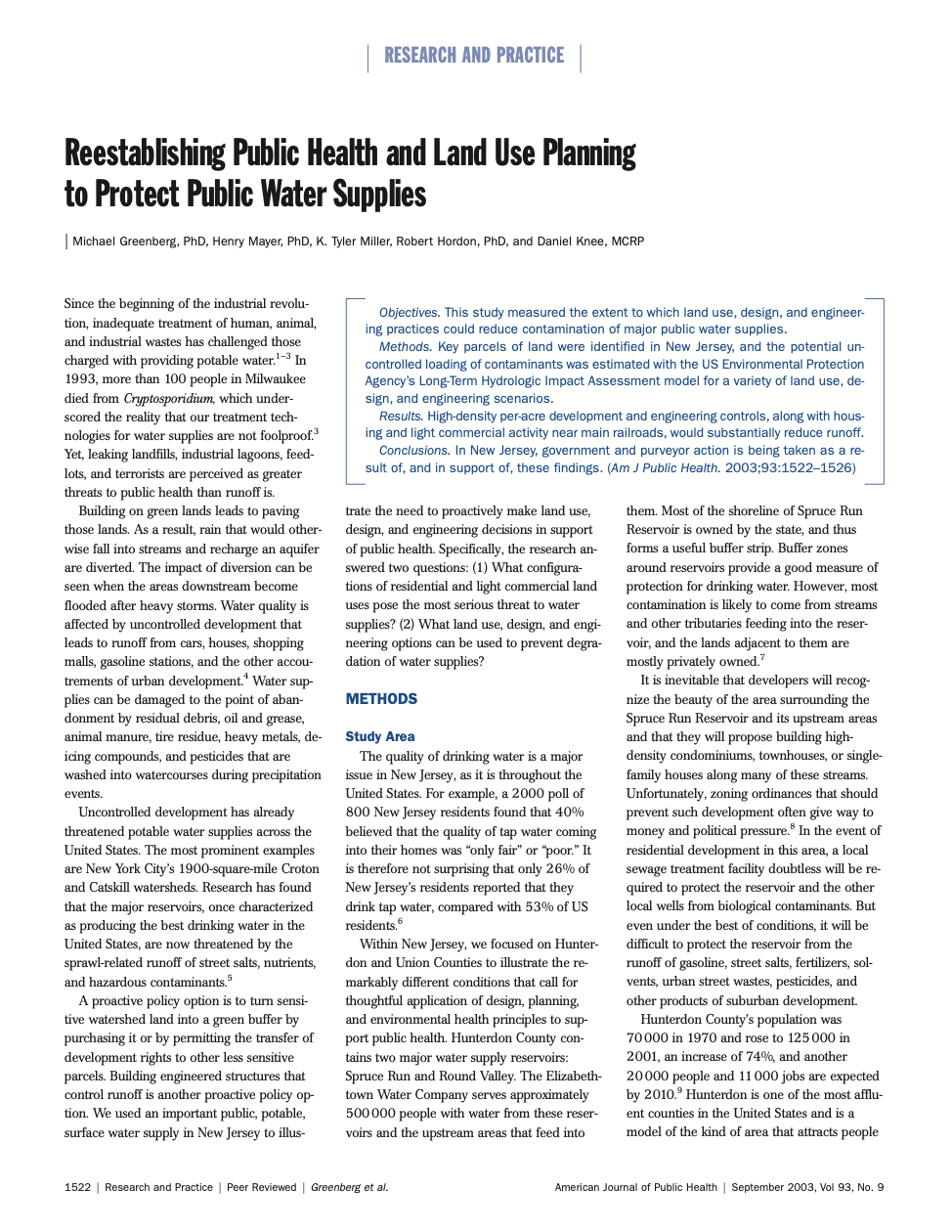Objectives. This study measured the extent to which land use, design, and engineering practices could reduce contamination of major public water supplies.
Methods. Key parcels of land were identified in New Jersey, and the potential uncontrolled loading of contaminants was estimated with the US Environmental Protection Agency’s Long-Term Hydrologic Impact Assessment model for a variety of land use, design, and engineering scenarios.
Results. High-density per-acre development and engineering controls, along with housing and light commercial activity near main railroads, would substantially reduce runoff.
Conclusions. In New Jersey, government and purveyor action is being taken as a result of, and in support of, these findings.
